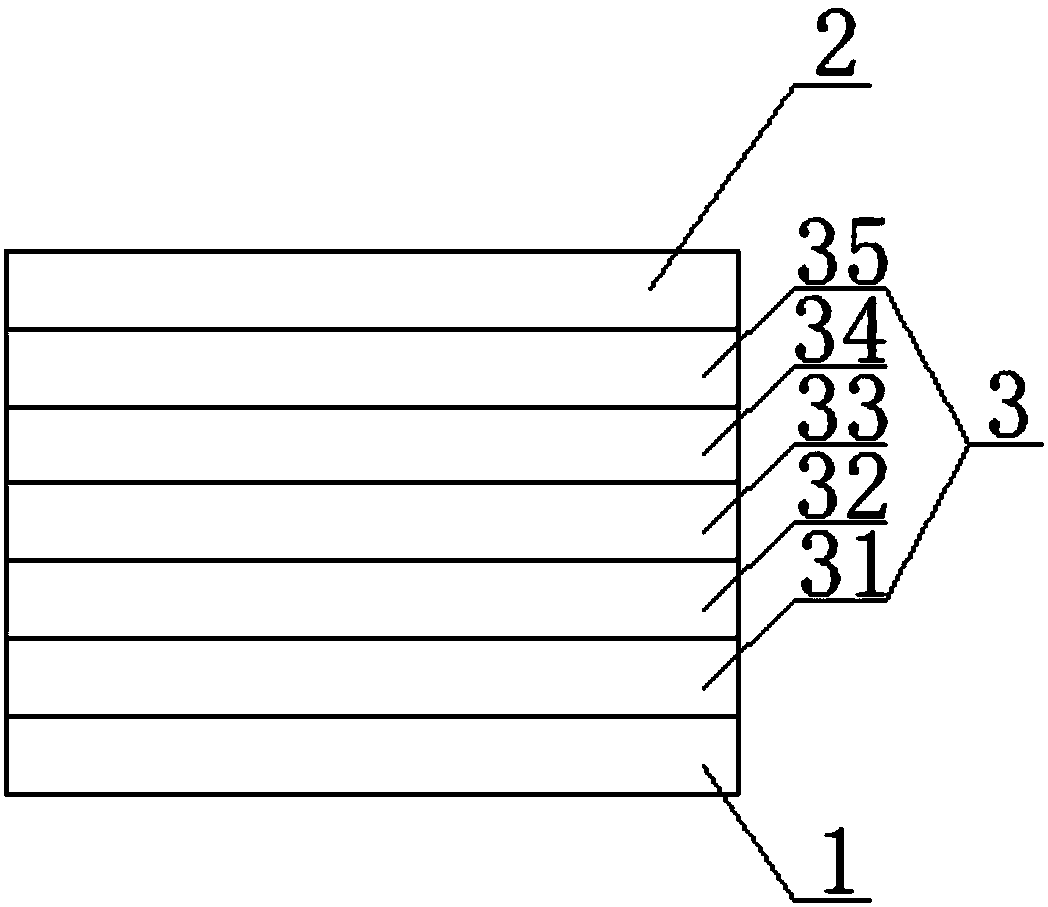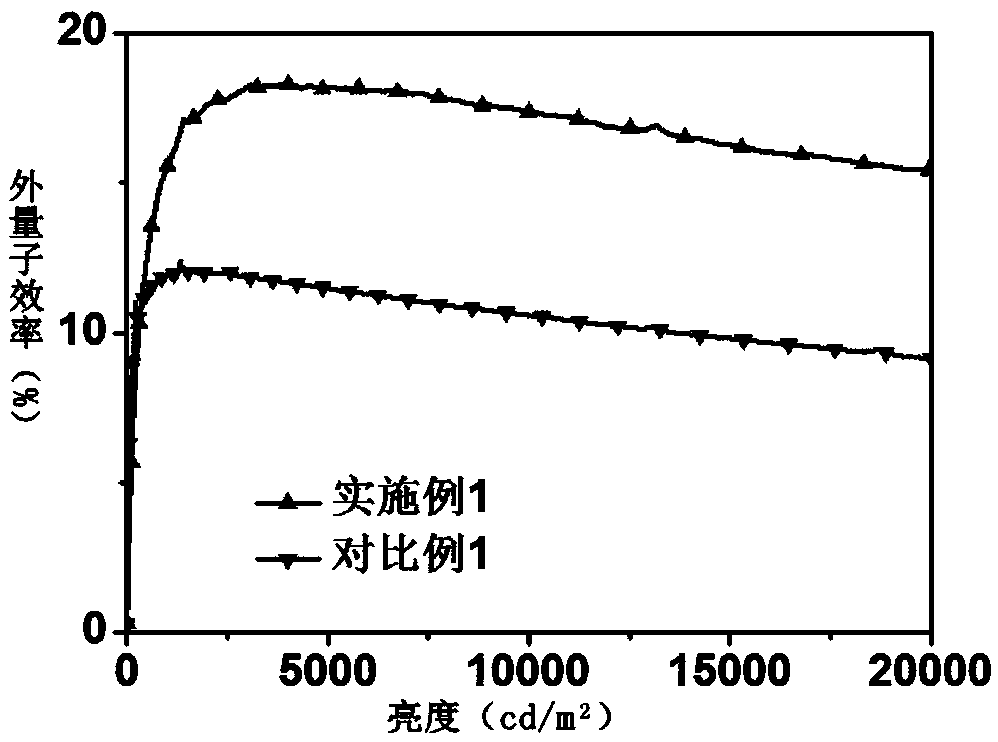Organic electroluminescent device
An electroluminescent device and luminescent technology, which are applied in organic semiconductor devices, electric solid devices, organic chemistry, etc., can solve the problems of limited application, short life, and efficiency roll-off, so as to improve utilization, increase life, and reduce The effect of efficiency roll-off
- Summary
- Abstract
- Description
- Claims
- Application Information
AI Technical Summary
Problems solved by technology
Method used
Image
Examples
Embodiment 1
[0046] This embodiment provides an organic electroluminescent device, such as figure 1 As shown, there are a first electrode 1 , a second electrode 2 and an organic functional layer 3 between the first electrode 1 and the second electrode 2 . The first electrode 1 is an anode, the second electrode 2 is a cathode, and the organic functional layer 3 includes a hole injection layer 31, a hole transport layer 32, a light emitting layer 33, an electron transport layer 34 and an electron injection layer 35 that are stacked, that is, the The structure of the organic electroluminescent device is: anode / hole injection layer / hole transport layer / light emitting layer / electron transport layer / electron injection layer / cathode.
[0047]The light-emitting layer 33 is composed of a host material and a dopant material doped in the host material. The wide bandgap material and the exciplex constitute the host material by co-evaporation, and the donor molecules and acceptor molecules are co-evapo...
Embodiment 2
[0068] In embodiment 2, the OLED device can be designed as the following organic electroluminescent device, the structure of the organic electroluminescent device includes an anode, a hole injection layer, a hole transport layer, an organic light emitting layer, an electron transport layer, an electron injection layer and the cathode. In this example, a compound containing a fluorenyl group is used as a bandgap material for the cell, which has a structure as shown in formula (W-25):
[0069]
[0070] A compound containing phenyl and carbazolyl is selected as the donor molecule, which has the structure shown in formula (D-1):
[0071]
[0072] A compound containing triazine, phenyl, and diphenylphosphono is selected as the acceptor molecule, and has a structure as shown in formula (A-6):
[0073]
[0074] The above-mentioned donor molecule having the structure shown in formula (D-1) and the acceptor molecule having the structure shown in formula (A-6) constitute an ex...
Embodiment 3
[0084] This embodiment provides an organic electroluminescent device, the structure of which is the same as that of embodiment 1. The only difference between the organic electroluminescent device and the organic electroluminescent device provided in embodiment 1 is that the hole transport layer is changed from TAPC to NPB, Its molecular structure is:
[0085]
[0086] The host material in the light-emitting layer is selected from a wide bandgap material having a structure shown in formula (W-19) and a donor molecule having a structure shown in formula (D-2) and having a structure shown in formula (A-10) The excimer complex formed by the acceptor molecule of the structure, the doping material is a fluorescent doping dye with a structure shown in formula (F-10):
[0087]
[0088] In the organic light-emitting layer 33, the exciplex formed by the donor molecule having the structure shown in formula (D-2) and the acceptor molecule having the structure shown in formula (A-10)...
PUM
 Login to View More
Login to View More Abstract
Description
Claims
Application Information
 Login to View More
Login to View More - R&D Engineer
- R&D Manager
- IP Professional
- Industry Leading Data Capabilities
- Powerful AI technology
- Patent DNA Extraction
Browse by: Latest US Patents, China's latest patents, Technical Efficacy Thesaurus, Application Domain, Technology Topic, Popular Technical Reports.
© 2024 PatSnap. All rights reserved.Legal|Privacy policy|Modern Slavery Act Transparency Statement|Sitemap|About US| Contact US: help@patsnap.com










